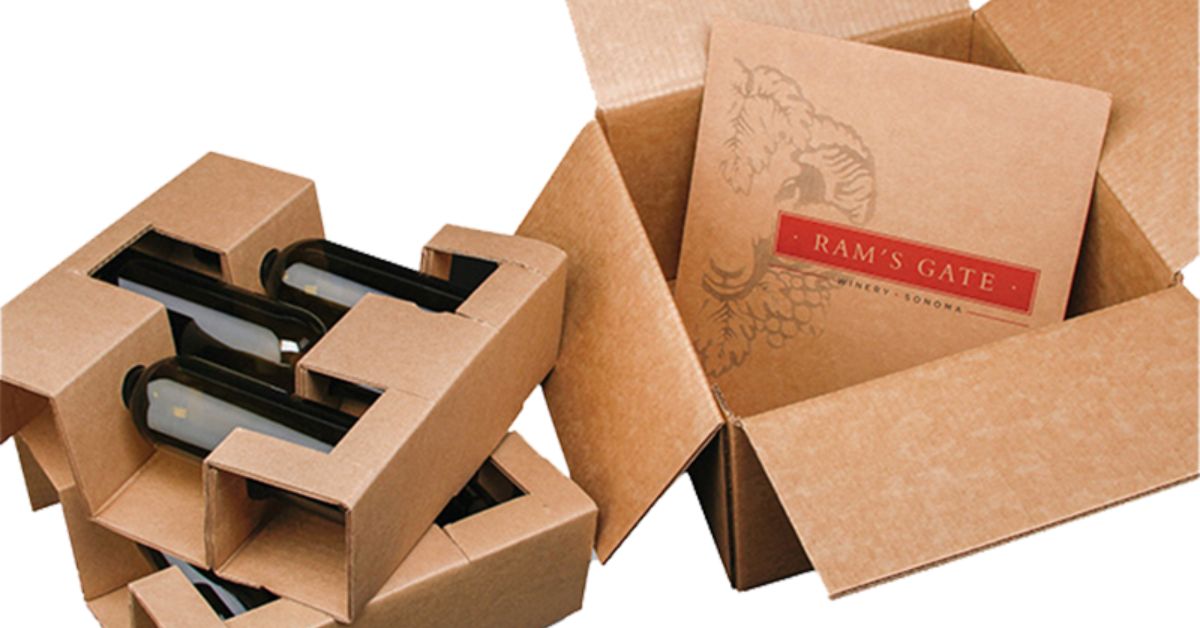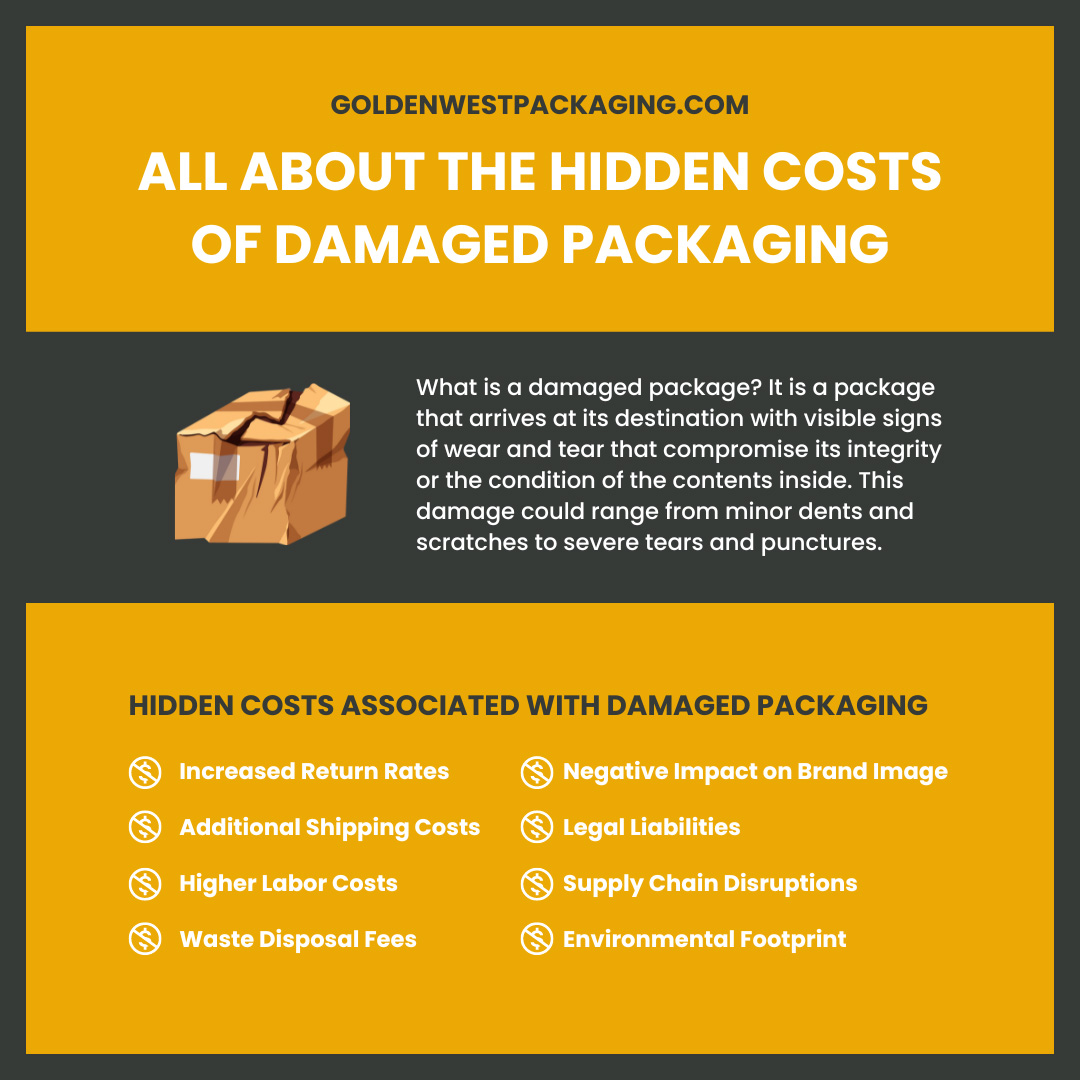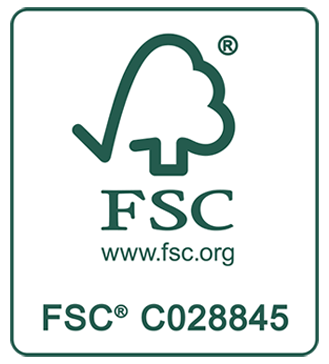
Your product packaging is an important step in branding your business, protecting the product, and providing the customer with a unique experience. Having perfect packaging is crucial for this, as flaws can significantly hinder your brand’s message. While we often focus on visible flaws, the true repercussions extend far beyond what meets the eye.
Have you ever considered how a dented box or torn label could silently seep into your bottom line? If not, damaged packaging will have hidden costs that you haven’t prepared for. Keep reading to learn all about the hidden costs of damaged packaging and see how seemingly minor imperfections can lead to major financial setbacks.
What Defines a Damaged Package and What Are the Causes?
What is a damaged package? It is a package that arrives at its destination with visible signs of wear and tear that compromise its integrity or the condition of the contents inside. This damage could range from minor dents and scratches to severe tears and punctures.
Causes of Damaged Packaging:
• Rough handling by couriers and warehouse staff often leads to crushed corners, torn sides, and punctured surfaces.• Using substandard or inappropriate packaging materials can compromise the package’s ability to protect its contents.
• Overpacking or underpacking can cause items to shift during transit, leading to damage.
• Exposure to extreme weather conditions such as rain, snow, or high humidity can weaken packaging materials.
• Mistakes can result in damage during the packing process.
Recognizing these causes can help you develop preventive strategies, which we’ll discuss later. But first, let’s explore the hidden costs of damaged packaging.
Hidden Costs Associated With Damaged Packaging
Increased Return Rates
Damaged packaging directly correlates with higher return rates. Customers are more likely to return the damaged products they receive, leading to increased operational costs for processing returns and issuing refunds. High return rates can also lead to restocking challenges, especially if the damaged products are no longer sellable.
Additional Shipping Costs
Every return or replacement shipment incurs additional shipping expenses. These costs can quickly add up, especially for businesses that offer free returns as part of their customer service policy. Over time, these extra shipping fees can significantly impact your bottom line.
Higher Labor Costs
Handling damaged goods requires additional labor. Employees must process returns, inspect damaged items, repackage, and ship replacements. These tasks divert attention from other productive duties and increase overall labor costs.
Waste Disposal Fees
Damaged packaging often means unsellable products, which, in turn, leads to higher waste disposal fees. Disposing of these products can be costly, especially if your local waste facility categorizes them as hazardous. Hazardous waste disposal can strain your budget and have environmental repercussions.
Negative Impact on Brand Image
Damaged packaging can have long-term impacts on your brand’s image. Consistently receiving damaged goods frustrates customers, leading to negative reviews and a tarnished reputation. A single, unhappy customer can influence thousands of potential buyers through social media.
Legal Liabilities
Depending on the nature of the damage, your business could face legal liabilities. For example, a customer might sue for damages if the product they received injured them. Your company’s legal fees and settlements can be hefty, even if you settle the case out of court.
Supply Chain Disruptions
Damaged packaging can disrupt your entire supply chain. For instance, a delay caused by handling returns and replacements can affect inventory levels, leading to stockouts or overstocks. This imbalance can further strain your relationship with suppliers and affect your supply chain’s overall efficiency.
Environmental Footprint
Many often overlook the environmental impact of damaged packaging. Disposing of damaged goods and packaging materials contributes to landfill waste and environmental degradation. Additionally, the carbon footprint associated with reshipping products adds to your company’s environmental impact.
Strategies To Prevent Packaging Damage
Invest in Quality Materials
The first step in preventing packaging damage is to invest in high-quality materials and packaging, such as custom corrugated boxes. Durable or corrugated materials, reinforced tapes, and premium cushioning can make a significant difference in protecting your products. While the initial investment may be higher, the long-term savings in reduced damage and returns will outweigh the costs.
Optimize Packaging Design
Tailor your packaging design to suit your products’ specific needs. Consider factors such as size, shape, weight, and fragility. Utilize design software to simulate stress tests and identify weak points. This proactive approach can help your team create functional and durable packaging.
Train Your Staff
Proper training for warehouse and handling staff is crucial. Educate them on the importance of careful handling, the correct way to pack and label items, and the procedures for identifying and addressing potential issues. Well-trained staff can significantly reduce the incidence of damaged packages.
Implement Quality Control Checks
Introduce multiple quality control checkpoints throughout your supply chain. Inspect products and packaging materials upon arrival, while packing, and before shipment. Regular audits and random checks can help you identify recurring issues and areas for improvement.
Use Advanced Technology
Incorporate technology such as IoT sensors and RFID tags to track the packages’ condition in real-time. These tools can provide valuable data on handling conditions, temperature fluctuations, and impacts during transit. You can use this information to make data-driven decisions to enhance your packaging processes.
Sustainable Packaging Solutions
Adopt sustainable packaging solutions that are both eco-friendly and robust. Biodegradable materials, recyclable plastics, and reusable containers can reduce waste and environmental impact while ensuring product safety. Highlighting your commitment to sustainability can also enhance your brand image.
Customer Feedback Loop
Encourage customers to provide feedback on the condition of their received packages. This information can offer insights into common issues and areas for improvement. Promptly addressing customer concerns can also improve satisfaction and build loyalty.
Partner with Reliable Carriers
Choose shipping and logistics partners known for their reliability and care in handling packages. Establish clear guidelines and standards for them to follow and regularly review their performance. A strong partnership with trustworthy carriers can minimize the risk of package damage during transit.
Damaged packaging can have far-reaching consequences that go beyond the immediate loss of a sale. By learning all about the hidden costs of damaged packaging, your business can take proactive steps to mitigate these risks. Start implementing the proper today to protect your products, enhance customer satisfaction, and boost your bottom line. Protect your brand and ensure every package arrives in perfect condition.




